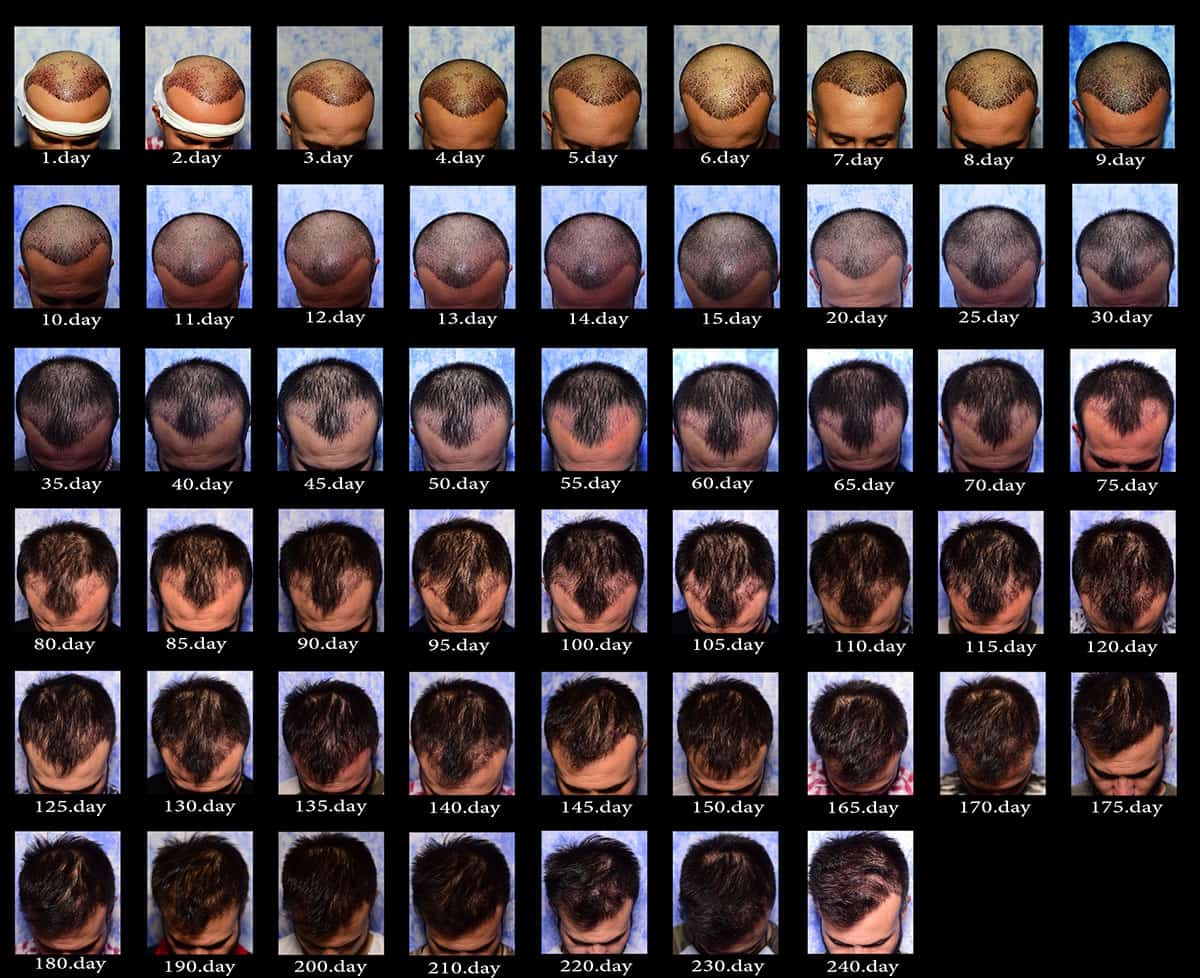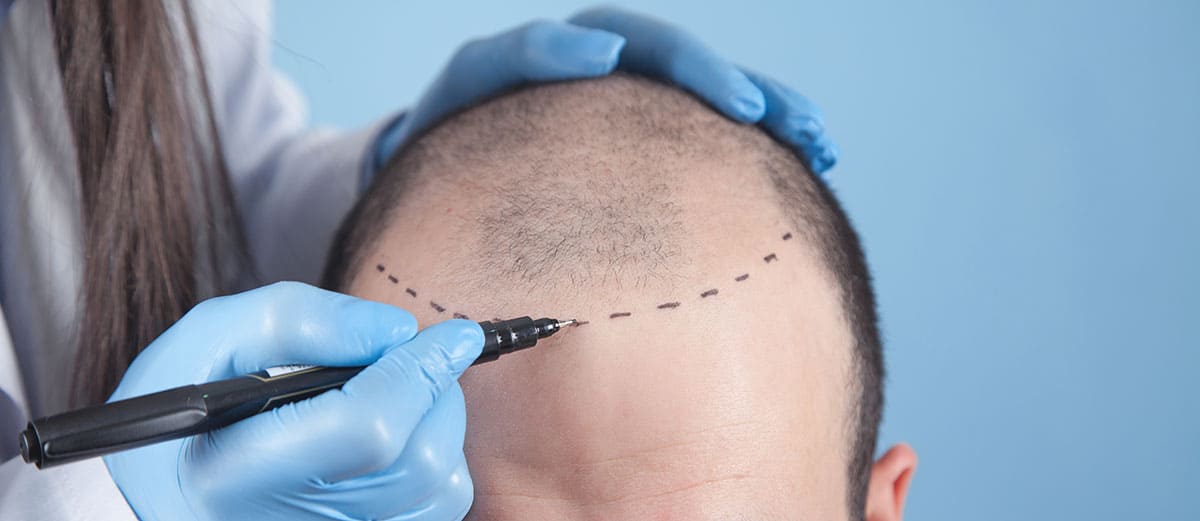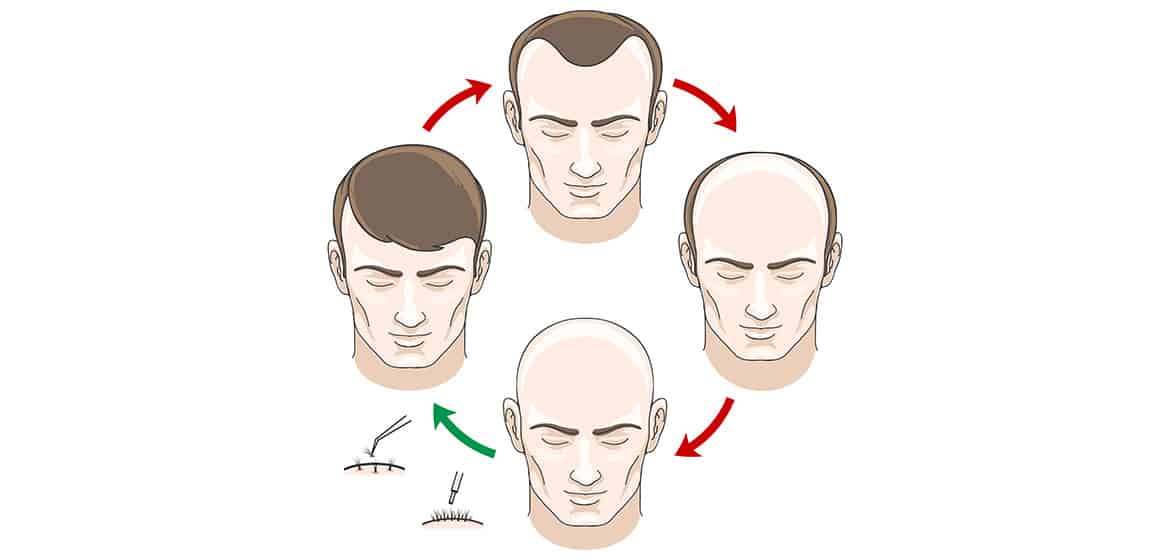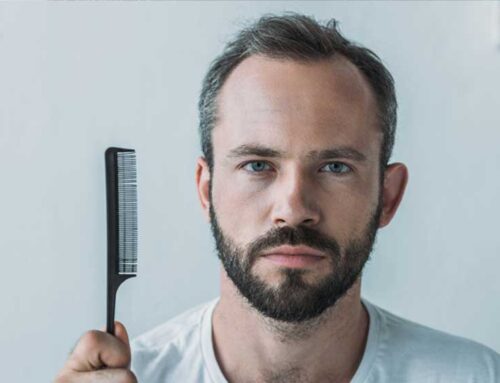How long do hair transplant last? Recovery and Expectations
As soon as your doctor completes your hair transplant, you will be able to see the outline of your new and improved hairline. Hair should start to grow quickly after your transplant.
One frustration many patients encounter is hair shedding and loss after the initial growth. Once this first batch of transplanted hair falls out, it should grow back in a permanent capacity. Hair should look healthy and normal.
Most people report significant changes in hair growth after about half a year. The complete results of the procedure are almost always visible fully after one year.
Modern hair transplants are safe, natural, and permanent.
Patients are considered ideal if they have enough healthy hair growing somewhere on their heads that doctors can transfer follicles to the affected area. You will also need to have the ability to grow hair on the site you’ve selected. This means heavily scarred scalp might not be eligible for effective transplant.
Expectations and Recovery of Hair Transplant
After the surgery, your scalp may be very tender. You may need to take pain medications for several days. Your surgeon will have you wear bandages over your scalp for at least a day or two. He may also prescribe an antibiotic or an anti-inflammatory drug for you to take for several days. Most people are able to return to work 2 to 5 days after the operation.
Within 2 to 3 weeks after surgery, the transplanted hair will fall out, but you should start to notice new growth within a few months. Most people will see 60% of new hair growth after 6 to 9 months. Some surgeons prescribe the hair-growing drug minoxidil (Rogaine) to improve hair growth after transplantation, but it’s not clear how well it works.
FUT and FUE may each take several hours to several days to complete. In part, this depends on the amount of work performed by the surgeon. You will go home the same day of the procedure.
Once the surgery is done, your surgeon carefully removes any bandages. The area may be swollen, so your surgeon might inject triamcinolone into the area to keep the swelling down.
You can feel pain or soreness at the transplant site as well as in the area where hair was taken from. For the next few days, your surgeon can prescribe:
- pain medications, such as ibuprofen (Advil)
- antibiotics to prevent infections
- anti-inflammatories, such as an oral steroid, to relieve swelling
- medications such as finasteride (Propecia) or minoxidil (Rogaine) to help stimulate hair growth
Here are some aftercare tips for hair transplant surgery:
- Wait a few days after the surgery to wash your hair. Only use mild shampoos for the first few weeks.
- You should be able to return to work or normal activities in about 3 days.
- Don’t press a brush or comb down over the new grafts for about 3 weeks.
- Don’t wear any hats or pullover shirts and jackets until your doctor say it’s OK.
- Don’t exercise for about a week.
Don’t worry if some hairs fall out. This is part of the process. Transplanted hair may not grow much or seamlessly match the hair around it for a few months.

How Long Does a Hair Transplant Last? Explanation
Hair transplant surgery takes healthy hair follicles and transplants them to your thinning or balding areas. With hereditary baldness, your hair maintains the characteristics of where it was taken from, regardless of where it’s placed in the scalp. That’s why hair transplant surgery is the only permanent solution to hair loss.
Hair loss is progressive and there’s a physical limit to what can be done in a single procedure. Some patients choose to have multiple procedures in order to increase their hair density. It doesn’t affect the hair originally transplanted.
Factors that decides how long hair transplant last
Common hair restoration procedures provide natural-looking results that grow as hair normally does. Although clients often enjoy a high rate of successful transplants, a few factors and decisions can potentially limit results, including:
- Choosing the right clinic and surgeon: The techniques used for hair restoration procedures have improved dramatically over the years, and top-rated clinics like Feller & Bloxham Hair Transplantation consistently achieve a large graft growth success rate. Unfortunately, many sub-standard clinics exist- see ourhair transplant clinic pyramid Learn thorough research online and find a surgeon who can deliver consistent and effective results.
- Accepting that transplantation does not work for everyone: Hair transplants are not a miracle cure. Those with advanced hair loss — where hair follicles remain dormant for two to seven years — and those who have very thin hair in the donor area will have poorer results from their hair transplantation procedure. This doesn’t mean that significant cosmetic results can’t be found. Just that expectations must be set lower.In almost every case some well-placed transplanted hairs are better than no hair at all.
- Undergoing continued loss of hair: A transplant does not prevent future hair loss. The newly implanted hair may last a lifetime, but the hair surrounding the transplant site could continue to fall out. There are some treatments for continuous hair loss. Click to learn more about Real Hair Loss Treatmentsand quackery.
- Selecting an adequate donor area capacity: The size of the permanent zones varies from person to person. A larger donor area allows for more grafts to be removed during the hair transplant. If the permanent zone is relatively small or sparse, however, you may have to adjust your expectations for the achievable amount of coverage. An experienced hair transplant doctor can help you with this.

Duration of FUE or FUT Procedure
A hair transplant can last permanently whether a client receives an FUE or FUT procedure. The permanent zone from which hair follicles are taken earned its name because the hair is genetically programmed not to fall out. However, about half the patients who receive a hair transplant opt for another one within about 10 years for an assortment of reasons, including:
- Continued thinning of hair outside of the original hair transplant recipient site due to age
- Loss of hair shaft diameter due to age
- Experiencing other environmental and genetic factors
Will a hair transplant last forever?
During a hair transplant, grafts are taken from an area of the head where they’re genetically programmed to keep growing. Even after they’re implanted into the balding areas of the scalp, the transplanted hair follicles retain the characteristics of their origin and continue to grow for life. This means that with the right surgeon and proper aftercare, an FUT or FUE hair transplant can last a lifetime.
However, it’s important to understand that everyone is different and no treatment can guarantee a level of transplanted hair thickness that is inconsistent with the characteristics, thickness and lifespan of a patient’s natural hair.
While FUT and FUE hair transplants can provide a permanent solution to hair loss, it’s not unusual for patients to undergo more than one procedure during their hair restoration journey. One of the major challenges is that there is a limited supply of donor hair at the back and sides of one’s head, so it is rarely possible to replace all the hair that is lost in a lifetime.
Multiple Hair Transplant
Planning and performing a successful hair transplant can be challenging because hair loss is often a progressive process. This means that while transplanted hair may be permanent, the patient’s original native hair may continue to thin.
As a result, it’s sometimes necessary for patients to undergo more than one hair transplant during their lifetime. This might be to add density to a previously transplanted area, address a new area of baldness or transplant hair to areas of ongoing hair loss.
Following hair restoration surgery, many of our patients take hair loss medication such as finasteride and/or minoxidil to help stabilize ongoing hair loss and minimize the need for further surgery.
The possible issues taken care for you during consultation.
Is Hair Transplant Permanent?
While most hair transplants are intended to be permanent, you’ll notice that hair restoration clinics generally stop short of saying that. This is because there are a number of factors which can prevent a hair transplant from lasting forever, so no clinic can responsibly guarantee permanent results. The good news, however, is that procedures such as FUT or FUE will almost always result in continued hair growth in once bald areas. It is only in extreme cases that hair loss will resume.





